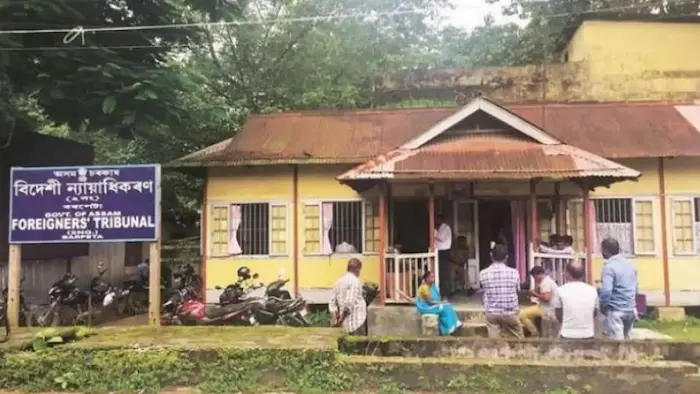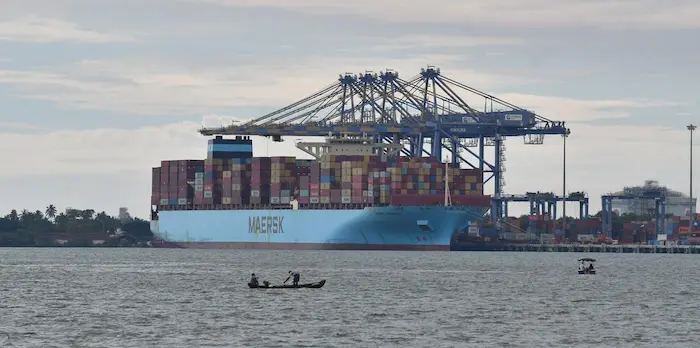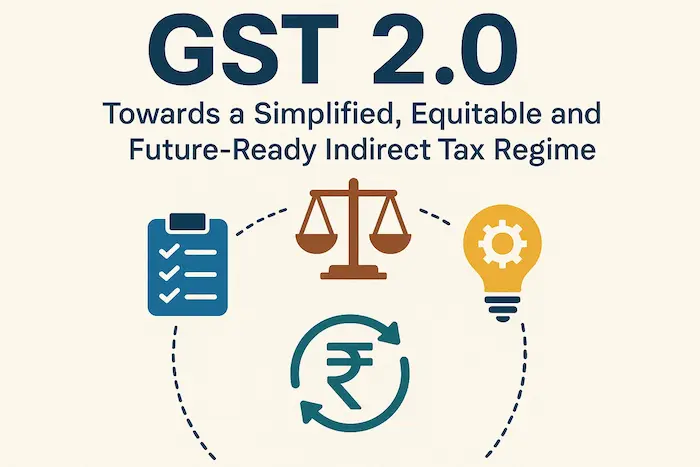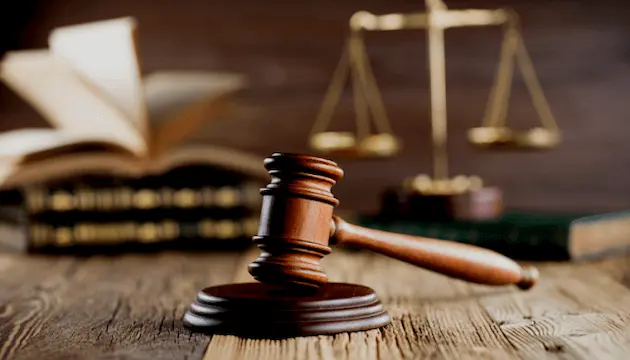1. Foreigners Tribunal (FT) Empowered to Issue Arrest Warrants – Polity

Why in News?
The Union Home Ministry has empowered Foreigners Tribunals (FTs) — particularly in Assam — to issue arrest warrants and detain suspected illegal immigrants in designated detention camps. This authority, which was earlier executed through executive orders, is now legally granted under the Immigration and Foreigners Act, 2025.
Key Points
What are Foreigners Tribunals (FTs)?
- Quasi-judicial bodies established under the Foreigners (Tribunal) Order, 1964.
- Primarily operate in Assam, tasked with determining whether an individual is an illegal immigrant or foreigner.
- Became more prominent post the National Register of Citizens (NRC) 2019 update.
Recent Changes
- Under the Immigration and Foreigners Act, 2025, FTs now have:
- Judicial powers to issue arrest warrants.
- Authority to order detentions.
- Right to require personal appearances of suspected individuals.
Operational Framework
- Around 100 FTs are currently active in Assam.
- Handle cases referred by:
- Border police.
- Election Commission, especially those marked as “D-voters” (Doubtful voters).
- FTs have civil court powers:
- Summon witnesses.
- Examine evidence.
- Resolve cases within 60 days.
Composition of FTs
- Maximum of 3 members.
- May include retired judges, advocates, or civil servants with judicial experience.
Employment & Exemptions
- Foreigners are barred from working in strategic sectors without Central Government approval.
- Exemptions granted to citizens of:
- Nepal
- Bhutan
- Tibetans
- Sri Lankan Tamils (as per special order, 2025)
Exam Connect – Possible Questions
Prelims
1. With reference to Foreigners Tribunals (FTs) in India, consider the following statements:
1. FTs are quasi-judicial bodies established under the Citizenship Act, 1955.
2. FTs can issue arrest warrants under the Immigration and Foreigners Act, 2025.
3. Only retired High Court judges can be appointed as members of FTs.
Which of the above statements is/are correct?
A. 2 only
B. 1 and 3 only
C. 2 and 3 only
D. 1, 2 and 3
Answer: A. 2 only
2. Which of the following communities are currently exempted from being tried under Foreigners Tribunals as per the 2025 special order?
A. Rohingyas
B. Tibetans
C. Bangladeshis
D. Afghans
Answer: B. Tibetans
Mains
1. “The empowerment of Foreigners Tribunals to issue arrest warrants marks a shift from executive to legal control in immigration governance.” Critically analyze the implications of this shift, particularly in the context of Assam. (250 words)
2. Discuss the role of Foreigners Tribunals in managing illegal immigration in India. What are the challenges associated with their functioning? (200 words)
2. National Sports Governance Act 2025: Towards Transparency & Accountability in Indian Sports – Governance

Why in News?
The National Sports Governance Act, 2025 was enacted during the Monsoon Session of Parliament to overhaul the framework regulating national sports federations in India. It replaces the outdated National Sports Development Code of India and aims to curb mismanagement, political interference, and legal disputes in sports administration.
Key Highlights of the Act
Objective:
To establish a transparent, accountable, and athlete-focused governance system in Indian sports.
Major Provisions:
- Establishment of National Sports Board (NSB):
- Acts as a central authority to recognize national sports federations.
- Resolves legitimacy disputes among rival factions in sports bodies.
- Mandatory Governance Norms:
- Federations must follow prescribed standards of transparency, internal democracy, and code of conduct.
- National Sports Tribunal:
- To resolve disputes related to governance, player selection, elections, and more.
- Eases burden on regular courts and ensures specialized adjudication.
- Election Oversight:
- A national panel of electoral officers will supervise elections to sports federations.
- Ensures compliance with democratic norms and prevents prolonged litigation.
- Code of Conduct:
- Federations are required to adopt rules aligned with international best practices and Olympic Charter norms.
Background & Context
- Despite India’s early Olympic presence (since 1900), there was no statutory governance framework for sports until 2025.
- Sports federations were often run by political leaders or non-sportspersons, leading to:
- Electoral malpractices.
- Lack of athlete representation.
- Opaque funding and functioning.
Examples of Past Misgovernance:
- Wrestling Federation of India suspended in 2023 for not holding timely elections.
- All India Football Federation (AIFF) suspended by FIFA in 2022 due to third-party interference.
Global Relevance:
- The reform aims to enhance India’s international credibility and chances to host global events, such as:
- Commonwealth Games.
- Olympic Games.
Exam Connect – Possible Questions
Prelims
1. With reference to the National Sports Governance Act, 2025, consider the following statements:
1. It mandates the creation of a National Sports Board to recognize sports federations.
2. It gives constitutional status to sports federations.
3. It replaces the National Sports Development Code of India.
Which of the above statements is/are correct?
A. 1 and 2 only
B. 1 and 3 only
C. 2 and 3 only
D. 1, 2 and 3
Answer: B. 1 and 3 only
2. Which of the following bodies is tasked with resolving disputes in Indian sports administration under the National Sports Governance Act, 2025?
A. National Green Tribunal
B. National Sports Tribunal
C. Sports Authority of India
D. Supreme Court of India
Answer: B. National Sports Tribunal
Mains
1. “The enactment of the National Sports Governance Act, 2025 marks a turning point in the regulation of sports federations in India.” Critically evaluate the provisions of the Act and discuss how it addresses governance challenges in Indian sports. (250 words)
2. Discuss the role of institutional reform in improving sports governance in India. In this context, evaluate the significance of the National Sports Governance Act, 2025. (200 words)
3. Debate on Exceeding the 50% Reservation Cap in India – Polity

Why in News?
Recent political and judicial debates have reignited discussion over whether India’s 50% reservation cap should be breached. Some states, such as Bihar, have proposed reservation quotas as high as 85%, citing demographic realities and demand for social justice, supported by calls for a nationwide caste census.
Key Takeaways
What is the 50% Reservation Cap?
- A judicially mandated limit to ensure a balance between merit and affirmative action.
- Laid down in the Indra Sawhney (Mandal Commission) case (1992), which held that reservations should not exceed 50%, except in extraordinary circumstances.
Constitutional Framework
| Article | Provision |
|---|---|
| Article 15(4) | Allows the State to make special provisions for socially and educationally backward classes (SEBCs), SCs, and STs. |
| Article 16(4) | Provides for reservation in public employment for backward classes. |
| Article 15(6) & 16(6) | Added by the 103rd Constitutional Amendment (2019) to provide 10% reservation to Economically Weaker Sections (EWS), over and above the 50% cap. |
Current Central Reservation Breakdown
- OBCs: 27%
- SCs: 15%
- STs: 7.5%
- EWS: 10%
Total: 59.5% (already exceeds 50% cap)
Key Judicial Pronouncements
- Balaji v. State of Mysore (1962)
Introduced the idea that reservations should not exceed 50%, setting a “reasonable limit”. - State of Kerala v. N.M. Thomas (1975)
Held that equality includes affirmative action, paving way for substantive equality. - Indra Sawhney v. Union of India (1992)
Upheld 27% OBC reservation, but reaffirmed the 50% ceiling.
Introduced the “creamy layer” principle for OBCs. - Janhit Abhiyan v. Union of India (2022)
Upheld the EWS quota.
Clarified that the 50% limit applies only to backward classes, not to EWS. - State of Punjab v. Davinder Singh (2024)
Advocated “creamy layer” filtering for SCs and STs as well, reigniting equity vs. equality debates.
Emerging Issues
Sub-Categorization of OBCs
- As per the Rohini Commission, a small percentage of dominant OBCs corner a major share of reservation benefits.
- Recommends internal categorization to ensure fair distribution among all OBCs.
Caste Census Demand
- A nationwide caste census is being demanded to enable evidence-based reservation policy.
- Last comprehensive caste data was collected in 1931.
Backlog Vacancies
- Significant unfilled reserved posts exist across sectors due to:
- Inadequate identification.
- Skill gaps.
- Recruitment bottlenecks.
Meritocracy vs. Social Justice
- While exceeding the cap may be politically expedient, it raises concerns about efficiency, competence, and merit dilution.
- Critics argue for investment in education and skill development rather than expanding quotas indefinitely.
Exam Connect – Possible Questions
Prelims
1. Which of the following Constitutional Amendments introduced the EWS reservation?
A. 100th Amendment
B. 101st Amendment
C. 102nd Amendment
D. 103rd Amendment
Answer: D. 103rd Amendment
2. The 50% ceiling on reservations in India was laid down by which landmark case?
A. Minerva Mills v. Union of India
B. Kesavananda Bharati v. State of Kerala
C. Indra Sawhney v. Union of India
D. Golaknath v. State of Punjab
Answer: C. Indra Sawhney v. Union of India
Mains
1. “The debate around breaching the 50% reservation cap reveals a deeper conflict between meritocracy and social justice.” Critically examine the constitutional, legal, and social dimensions of this debate. (250 words)
2. Discuss the role of caste census and sub-categorization in achieving equitable distribution of reservation benefits in India. What are the associated challenges? (200 words)
4. India’s Recent Maritime Reforms Need Course Correction – Governance

Why in News?
The Indian Ports Bill, 2025, along with related laws like the Coastal Shipping Act, 2025, Carriage of Goods by Sea Bill, 2025, and the Merchant Shipping Act, 2025, marks a comprehensive overhaul of India’s maritime governance framework.
While aimed at modernizing outdated maritime laws, the reforms have sparked concerns over centralization of powers, undermining of federalism, and burdening of smaller operators, potentially threatening their long-term viability.
Key Takeaways
Objective of the Reform Package:
To bring India’s maritime laws in line with international standards, replacing archaic laws from the colonial era with a streamlined, modern regulatory structure.
Main Laws Enacted in 2025
- Indian Ports Act, 2025
- Replaces the Indian Ports Act, 1908.
- Focuses on regulation, safety, and modernization of major and non-major ports.
- Establishes the Maritime State Development Council (MSDC) as a central regulatory authority.
- Coastal Shipping Act, 2025
- Aims to promote coastal trade and ensure preferential treatment for Indian-flagged vessels.
- Empowers the Director General of Shipping to grant licenses to foreign vessels under flexible criteria.
- Merchant Shipping Act, 2025
- Allows for foreign ownership of Indian-flagged vessels.
- Seeks to attract investment, but may lead to flag-of-convenience concerns.
- Carriage of Goods by Sea Bill, 2025
- Updates provisions on cargo handling, liability, and documentation, aligned with international maritime conventions.
Concerns and Criticisms
Centralization & Federalism Concerns
- The Maritime State Development Council (MSDC) can issue binding guidelines to states.
- Undermines cooperative federalism and state autonomy in port management.
Judicial Oversight Reduced
- Civil courts are barred from hearing port-related disputes.
- Disputes must go through internal dispute resolution, risking bias and lack of transparency.
- May deter private investment due to weak legal recourse.
Ownership Loopholes
- Partial foreign ownership of Indian vessels allowed under the Merchant Shipping Act.
- Raises fears of India becoming a flag-of-convenience nation, compromising sovereignty and control.
Small Operators at Risk
- Foreign vessel licensing under vague rules may disadvantage Indian small-scale shipping operators.
- Risk of market domination by large foreign players.
Exam Connect – Possible Questions
Prelims
1. Which of the following bodies is established under the Indian Ports Act, 2025, to guide maritime development in India?
A. Indian Maritime Commission
B. Maritime State Development Council
C. National Coastal Development Authority
D. Port Regulatory Tribunal
Answer: B. Maritime State Development Council
2. The Merchant Shipping Act, 2025 allows which of the following?
A. 100% foreign ownership of Indian ports
B. Licensing of inland waterways to private parties
C. Partial foreign ownership of Indian-flagged vessels
D. Reservation of all shipping routes for Indian companies only
Answer: C. Partial foreign ownership of Indian-flagged vessels
Mains
1. “India’s recent maritime reforms aim to modernize governance but risk undermining federalism and investor confidence.” Critically evaluate the Indian Ports Bill, 2025 and related maritime laws in this context. (250 words)
2. Discuss the implications of centralizing maritime governance in India through the Indian Ports Act, 2025. How can cooperative federalism be preserved while ensuring regulatory efficiency? (200 words)
5. Members of Parliament Local Area Development Scheme (MPLADS) – Governance

Why in News?
The Ministry of Statistics and Programme Implementation (MoSPI) recently conducted a national workshop to review the progress of the e-SAKSHI web portal and mobile app. These platforms aim to digitize and enhance transparency and accountability in the implementation of MPLADS.
Key Takeaways
What is MPLADS?
- Launched: 1993
- Type: Central Sector Scheme
- Objective: To enable Members of Parliament (MPs) to recommend developmental projects for creating durable community assets based on local needs in their constituencies.
Funding and Allocation
- Annual Allocation per MP: ₹5 crore
- Disbursement: In two equal instalments of ₹2.5 crore
- Funds Nature: Non-lapsable – unused funds carry forward to the next financial year.
- Targeted Allocation:
- 15% of funds for Scheduled Castes (SCs)
- 7.5% for Scheduled Tribes (STs)
Administrative Mechanism
- Initially managed by the Ministry of Rural Development
- Since 1994, managed by MoSPI, with district authorities executing projects.
- Each district collector acts as the nodal authority for implementation.
Types of Projects Funded
- Construction of:
- Libraries
- Community halls
- Drinking water facilities
- Public toilets
- School and health infrastructure
- Provision of:
- Ambulances
- Sanitation facilities
- Can be integrated with schemes like:
- MGNREGS (for labour)
- Khelo India (for sports infrastructure)
Special Provisions
- MPs may spend up to:
- ₹25 lakh for national unity projects outside their constituency.
- ₹1 crore during natural calamities for rehabilitation-related works.
e-SAKSHI Platform
- A digital interface for:
- Submitting project proposals
- Tracking progress
- Monitoring implementation
- Enhances transparency and public accessibility of project data.
- Supports real-time updates and geo-tagging of projects.
Transparency & Monitoring
- A plaque with the MP’s name and project details must be displayed at every project site.
- Project details must be made available on:
- District websites
- MPLADS official portal
- Monitoring:
- District authorities must inspect at least 10% of projects annually.
- Subject to audits by statutory auditors.
Exam Connect – Possible Questions
Prelims
1. Which ministry is currently responsible for the implementation of the MPLADS scheme?
A. Ministry of Rural Development
B. Ministry of Panchayati Raj
C. Ministry of Statistics and Programme Implementation
D. Ministry of Home Affairs
Answer: C. Ministry of Statistics and Programme Implementation
2. Under MPLADS, what is the total annual fund allocated per Member of Parliament?
A. ₹1 crore
B. ₹2 crore
C. ₹5 crore
D. ₹10 crore
Answer: C. ₹5 crore
Mains
1. “The MPLADS scheme empowers MPs to address local development needs but raises questions on transparency and accountability.” Critically evaluate the scheme in light of recent digital reforms such as e-SAKSHI. (250 words)
2. Discuss the role of MPLADS in fostering inclusive and participatory governance. What are the challenges in its implementation and monitoring? (200 words)
6. GST 2.0 Unveiled: Toward a Simpler and Fairer Tax System – Economy

Why in News?
In its 56th meeting, the GST Council announced landmark reforms under the banner of GST 2.0, introducing a simplified two-slab structure (5% and 18%), along with a 40% demerit rate on super luxury and sin goods. The changes aim to streamline India’s indirect tax regime, improve affordability, and enhance ease of doing business.
Key Takeaways
Simplified GST Rate Structure
- New Tax Slabs:
- 5% – Essential and daily-use goods.
- 18% – Standard rate for most goods and services.
- 40% – For super luxury, sin, and demerit goods (e.g., tobacco, alcohol, high-end cars).
Effective Date:
- All rate changes (except tobacco-related ones) will be applicable from September 22, coinciding with the start of Navratri, symbolizing “economic cleansing and renewal.”
Goals and Objectives of GST 2.0
- Rationalize and reduce tax slabs from the existing 4-5 tiers to just 2 (+ 1 demerit category).
- Improve taxpayer compliance through simplification.
- Reduce working capital pressures on businesses.
- Support MSMEs, farmers, and households by lowering tax rates on key goods and services.
- Expand automated compliance and digital integration for businesses.
Relief Measures for the Public
| Sector | Tax Change |
|---|---|
| Packaged Foods & Medical Supplies | GST reduced from 12%/18% → 5% |
| Air Conditioners, Small Cars | GST reduced from 28% → 18% |
| Life & Health Insurance Policies | Fully exempted from GST |
| Common Household Goods | Shifted to 5% slab |
States’ Concerns and Financial Impact
- States expressed reservations over possible revenue loss, estimated between ₹80,000 crore to ₹1.5 lakh crore annually.
- Despite concerns, consensus was reached within a single day, indicating strong Centre-State cooperation.
- Centre has promised compensation mechanisms and expanded tax base to offset losses.
Exam Connect – Possible Questions
Prelims
1. Under GST 2.0, which of the following is taxed at the highest rate of 40%?
A. Packaged food items
B. Air conditioners
C. Sin and luxury goods
D. Life insurance premiums
Answer: C. Sin and luxury goods
2. Which of the following statements about the GST Council is correct?
A. It is a statutory body established under the Income Tax Act.
B. It decides GST rates by a simple majority vote.
C. It is chaired by the Prime Minister.
D. It aims to achieve consensus among Centre and States on indirect tax matters.
Answer: D. It aims to achieve consensus among Centre and States on indirect tax matters.
Mains
1. “GST 2.0 represents a significant reform in India’s indirect taxation, aiming to simplify rates and widen the tax base.” Critically examine the implications of GST 2.0 on consumers, businesses, and states. (250 words)
2. Discuss the challenges and opportunities arising from the rationalization of GST slabs under GST 2.0. How does it align with the objectives of cooperative federalism and ease of doing business? (200 words)
7. Concealing a Judge’s Dissent: Eroding Judiciary’s Authority – Polity

Why in News?
A recent controversy has emerged around the alleged concealment of Justice B.V. Nagarathna’s dissent regarding the appointment of Justice Vipul M. Pancholi to a higher judicial office. This has reignited debates about the opacity of the Collegium system, which governs judicial appointments in India.
Key Takeaways
Lack of Transparency in Judicial Appointments
- Justice Nagarathna’s dissent reportedly was not recorded or disclosed, raising questions about the democratic accountability of the judiciary.
- The Collegium system continues to function without written reasons, no disclosure of dissent, and no public scrutiny.
Impact on Judicial Legitimacy
- Secrecy in appointments erodes:
- Public trust
- Judicial independence
- Accountability of constitutional authorities
- Perceived favoritism or non-merit-based selections weaken the moral authority of the judiciary.
Collegium System: An Overview
| Case | Contribution |
|---|---|
| First Judges Case (1981) | Gave primacy to the Executive in judicial appointments. |
| Second Judges Case (1993) | Created the Collegium System; shifted power to judiciary. |
| Third Judges Case (1998) | Expanded the Collegium to 5 senior-most SC judges for SC appointments. No Constitutional or Statutory backing; the Collegium is a judicially created mechanism. No official criteria, documentation, or timelines for decisions. |
Comparative Perspective
- In countries like UK, Canada, and South Africa, judicial appointments are made through transparent commissions with public hearings, detailed criteria, and recorded votes.
Reforms and Recommendations
| Suggested Reform | Purpose |
|---|---|
| Recording and publishing dissents | Promotes accountability and transparency |
| Criteria-based selection | Encourages merit-based, impartial appointments |
| Institutionalizing the process | Can reduce arbitrariness |
| Parliamentary oversight or public scrutiny | Ensures checks and balances |
Exam Connect – Possible Questions
Prelims
1. The Collegium system of judicial appointments in India was established through which of the following?
A. Constitution (42nd Amendment) Act, 1976
B. Second Judges Case, 1993
C. Third Judges Case, 2003
D. National Judicial Appointments Act, 2014
Answer: B. Second Judges Case, 1993
2. Which of the following statements is/are true about the Collegium system?
1. It is mentioned in the Constitution of India.
2.It includes the Chief Justice of India and senior-most judges of the Supreme Court.
3. It applies only to appointments of High Court judges.
Select the correct answer using the code below:
A. 2 only
B. 1 and 2 only
C. 2 and 3 only
D. 1, 2 and 3
Answer: A. 2 only
Mains
1. “The Collegium system, though established to protect judicial independence, now faces a crisis of legitimacy.” Critically evaluate the functioning of the Collegium system in the context of recent controversies. (250 words)
2. Discuss the constitutional and institutional challenges posed by the lack of transparency in judicial appointments. Suggest reforms to ensure accountability while maintaining judicial independence. (200 words)

